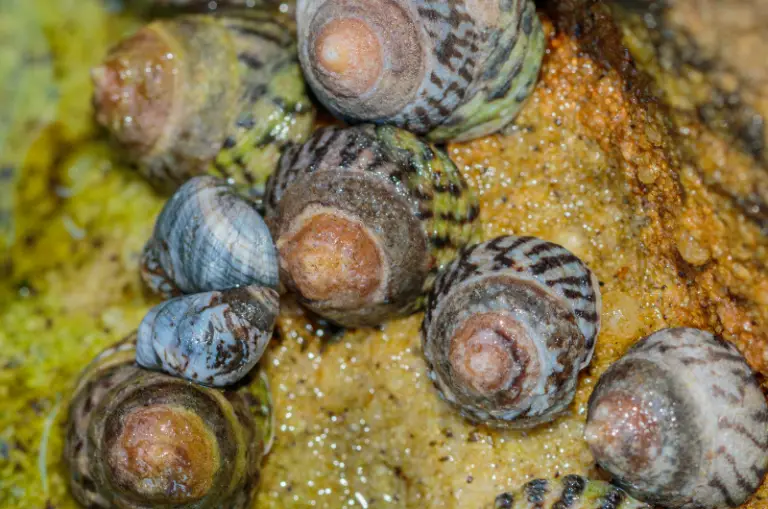Rabbit Snails: A Comprehensive Guide to Care and Breeding
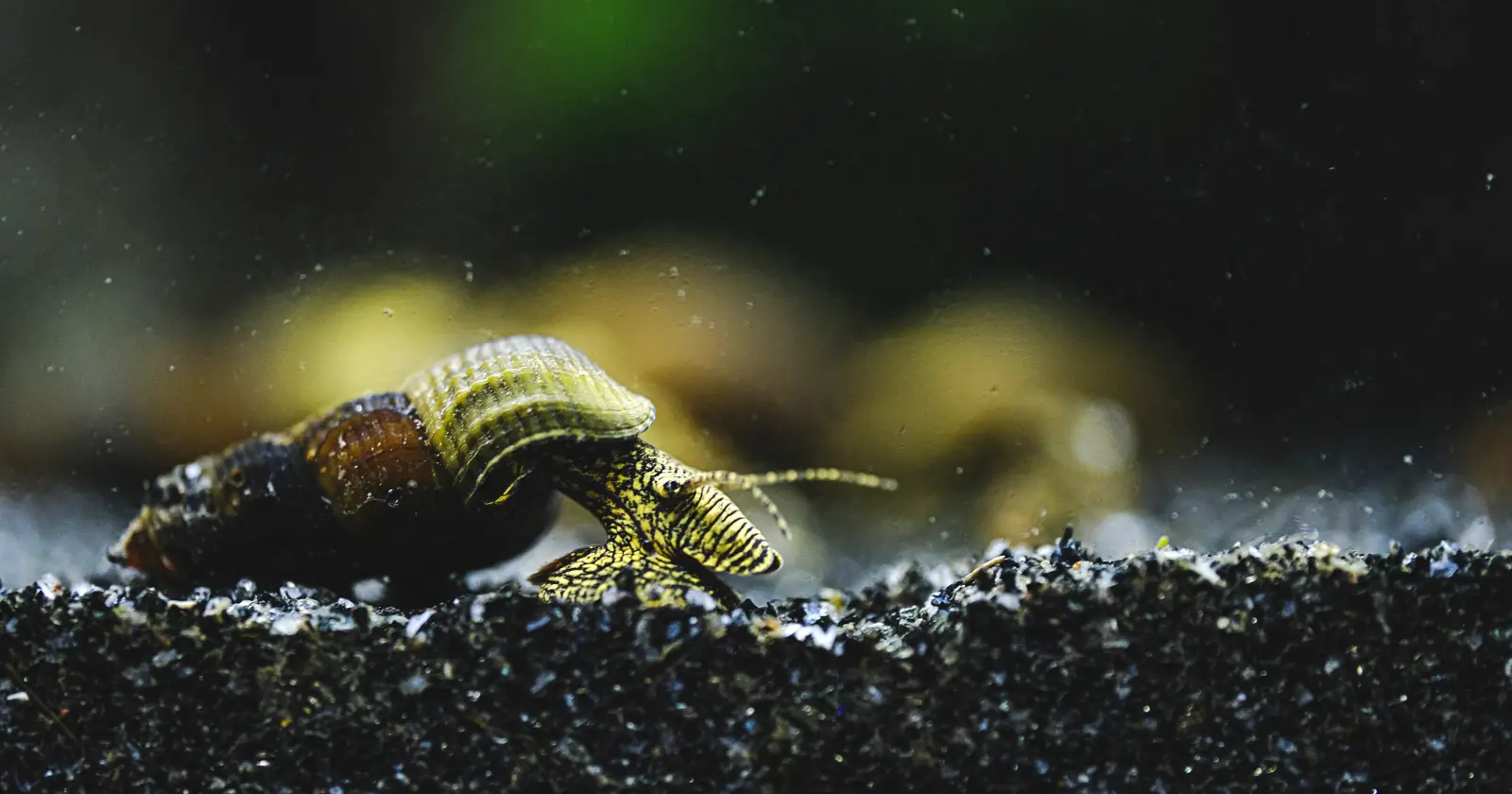
Rabbit snails, or Elephant snails or Tylomelania, are a unique and fascinating addition to any freshwater aquarium. These captivating creatures originate from Sulawesi, Indonesia, and can be found in mountain lakes. Rabbit snails are known for their long shells with striking colors and patterns and intriguing faces that resemble those of rabbits.
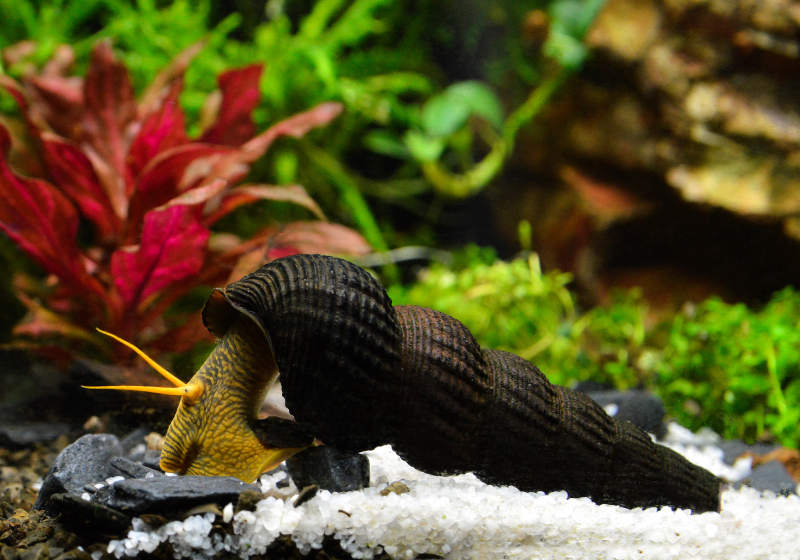
Caring for rabbit snails is relatively simple. Maintaining water quality with Nitrate and Ammonia levels at 0 ppm is important, as these factors greatly impact the health and appearance of rabbit snails. Their distinct shells and soft bodies, which range from vivid yellow to charcoal black, are best preserved in these optimal conditions.
A community aquarium of at least 30 gallons is recommended for these peaceful snails. With their unique appearance and low-maintenance care requirements, rabbit snails will not only add a splash of color but also serve a practical purpose by helping to clean your tank. So if you’re looking for a distinctive addition to your aquarium, consider bringing home some rabbit snails.
Contents
Table of Contents
Origin and Habitat
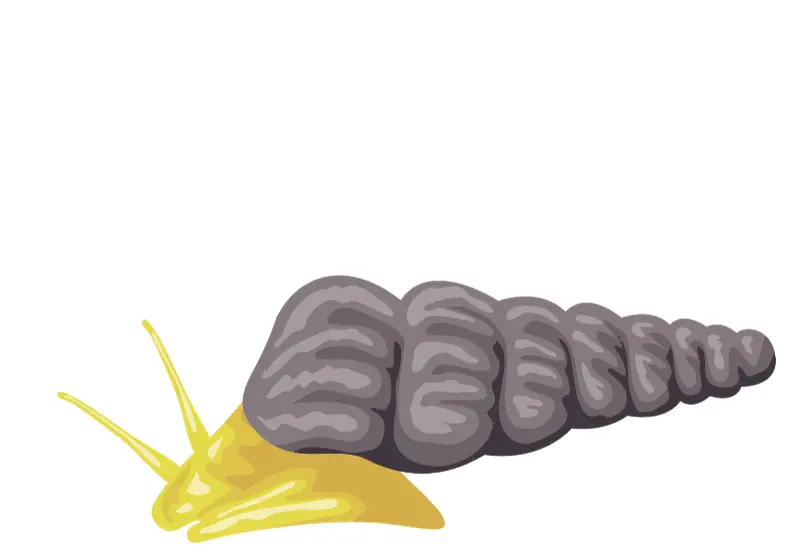
Rabbit snails, or elephant snails, are fascinating creatures known for their unique appearance and gentle demeanor. In this section, we’ll dive into their origin and the habitat where they naturally thrive.
Sulawesi, Indonesia
Rabbit snails originate from Sulawesi, Indonesia. They are found in warm freshwater lakes and streams throughout this region, including the native Lake Poso and the Malili Lake systems. This tropical environment provides the ideal conditions for rabbit snails to flourish, with temperatures ranging from 78-82°F and a pH of 7.5-8.5.
As inhabitants of Sulawesi, rabbit snails have thrived in various ecosystems, including rivers, streams, and lakes surrounded by lush vegetation. This environment provides plenty of hiding spots, food sources, and breeding opportunities. With around 50 known species of rabbit snails, they have become an essential part of the Sulawesi aquatic ecosystems.
In their natural habitat, rabbit snails contribute to the ecosystem’s health by consuming algae and leftover organic matter. This helps maintain a clean and balanced environment for other aquatic species to coexist.
Now that you have a better understanding of the origin and habitat of rabbit snails, you can appreciate the unique features that make them an exciting addition to your freshwater aquarium. Bringing a piece of Sulawesi’s vibrant aquatic life into your home is a rewarding experience that not only enhances the beauty of your tank but also supports the conservation of these fascinating creatures.
Species Identification

Elephant Snail
The Elephant Snail, also known as the Poso Snail or Giant Sulawesi Snail, is a unique freshwater species with a distinctive appearance. Their long shells often sport bright colors or markings, and their soft bodies range from vivid yellow to charcoal black, with additional spots or streaks of color. This species is known for its large size, reaching 4-5 inches long.
Black Rabbit Snails
Black Rabbit Snails are an attractive variation of rabbit snails, known for their striking black coloration. Their dark shells and bodies contrast nicely with other, more vibrant rabbit snail species. They are usually smaller than their Elephant Snail counterparts but are a fascinating addition to your aquarium.
Chocolate Rabbit Snails
Chocolate Rabbit Snails are another variety of the rabbit snail species. With deep brown shells reminiscent of chocolate, these snails can grow up to 4-5 inches long. Just like other rabbit snails, their elongated shells and unique faces make them stand out in any aquarium. Their antennae are also long and delicate, adding to their overall appearance.
Golden Rabbit Snail
Golden Rabbit Snails, also known as Tylomelania towutensis, are a stunning rabbit snail variant that sports a golden yellow shell with black spots. They are somewhat smaller than other rabbit snail species, as they typically reach up to 3.3 inches in length. However, their vibrant coloration and unique markings make them an attention-grabbing addition to your aquarium.
Aquarium Requirements
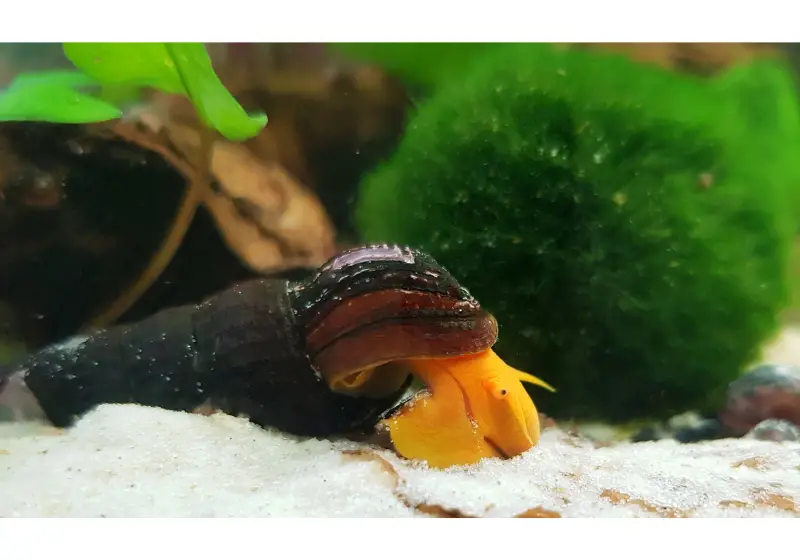
Substrate
Rabbit snails prefer a sand substrate in their aquarium, allowing them to move around and burrow easily. A smooth sand substrate is a good choice as it prevents the snails from damaging their shells.
Water Parameters
Maintaining a healthy environment for your rabbit snails is essential to stabilize the water parameters. Maintain a water temperature between 72°F and 78°F and a pH of 7.0 to 8.0. Regularly test your aquarium water to ensure it stays within these appropriate ranges.
Tank Size
A minimum tank size of 20 gallons is recommended for rabbit snails to roam and explore comfortably. This size gives them plenty of space to forage for food and prevents overcrowding, especially if you have multiple snails.
Equipment
Ensure your rabbit snail aquarium has the necessary items to maintain a clean, stable environment. This includes:
- A filter: Rabbit snails produce a fair amount of waste, so a high-quality filter will help maintain good water quality.
- A heater: To keep the water temperature within the preferred range for rabbit snails.
- Lighting: Proper lighting is essential if you have live plants in your aquarium. Choose a suitable LED light to support plant growth and create an appealing environment for your rabbit snails.
By providing the appropriate substrate, maintaining stable water parameters, selecting the right tank size, and using reliable equipment, your rabbit snails can thrive and enrich your aquarium experience.
Water Chemistry

PH Level
Rabbit snails thrive in water with a pH level between 7.5 and 8.5. They require alkaline water to maintain good health and strong shells. Regularly monitor your aquarium’s pH levels using a reliable test kit to ensure the water remains within the ideal range for your rabbit snails.
GH Level
General hardness (GH) is also important for your rabbit snails, as it indicates the amount of dissolved minerals, such as calcium and magnesium, in your aquarium water. Maintain a GH level suitable for rabbit snails to ensure they have the necessary minerals for their shell health. Calcium is particularly important for these snails, as it helps to prevent thin, cracked, or worn-out shells which could otherwise negatively affect their health.
KH Level
Carbonate hardness (KH) is another parameter affecting rabbit snails in your aquarium. A higher KH level helps to stabilize the pH, preventing sudden swings that could harm your snails. Maintaining a suitable KH level for rabbit snails will ensure the alkalinity of your aquarium remains stable and supportive of their well-being.
Temperature
Rabbit snails prefer a water temperature between 76°F to 84°F. Consistent temperature levels are crucial for their overall health and activity. Use a high-quality aquarium heater and an accurate thermometer to monitor and maintain the water temperature within this optimal range for your rabbit snails. Remember to avoid sudden temperature fluctuations, which could stress your snails and negatively impact their health.
Diet and Feeding

Dietary Requirements
Rabbit snails require a balanced diet to ensure healthy growth and prevent shell erosion. Providing them with calcium-rich foods like cuttlebone and green vegetables will help maintain the strength of their shells. They also need plant-based foods like algae wafers, which will supply them with necessary nutrients.
In addition to algae, rabbit snails can benefit from consuming sinking pellets, flakes, and pellets formulated for snails. Be cautious not to overfeed your rabbit snails—provide only the amount they can consume within a couple of hours.
Feeding Schedule
Feeding your rabbit snails daily ensures they get all the nutrients they need. Various food options like green vegetables, algae wafers, and sinking pellets will keep their diet well-rounded and prevent boredom with their food sources.
Monitor your snails during feeding time to ensure they consume their food and maintain a healthy appetite. If you notice any uneaten food after a couple of hours, remove it to prevent it from decaying and affecting the water quality in your aquarium.
Following these dietary recommendations and feeding schedules will keep your rabbit snails happy and thriving in their aquatic environment.
Behavior and Temperament
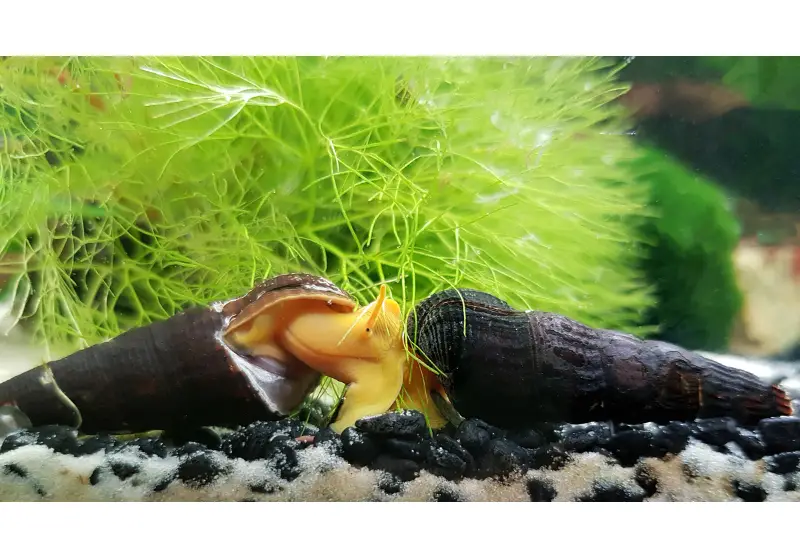
Inter-Species Interaction
Rabbit snails are known for their peaceful and curious temperament. They typically get along well with other non-aggressive species in a community tank. Since they are so inquisitive, you might often find your rabbit snails exploring their surroundings and interacting with other aquatic life. It’s important to choose tank mates that are also peaceful to ensure a harmonious environment for your rabbit snails.
Activity Patterns
These fascinating creatures have unique behavior patterns that may vary among different individuals. They tend to be more active at night, and you can often spot them burrowing into the substrate to search for food. During the day, they may be less active, but their inquisitive nature keeps them engaged in their environment.
While rabbit snails appreciate a well-structured habitat to explore, they can also be comfortable in simpler settings if they have enough space to move around. In a well-maintained community tank, you can expect to see your rabbit snails actively participating in the tank’s ecosystem. Their burrowing habits can help tank maintenance by preventing detritus buildup on the substrate.
To observe and appreciate your rabbit snails’ behavior, you must provide them with a suitable environment and monitor their activity patterns as they adapt to your aquarium. Understanding their temperament and ensuring a safe and comfortable habitat allows you to enjoy the fascinating world of rabbit snails.
Tank Mates: Rabbit Snails
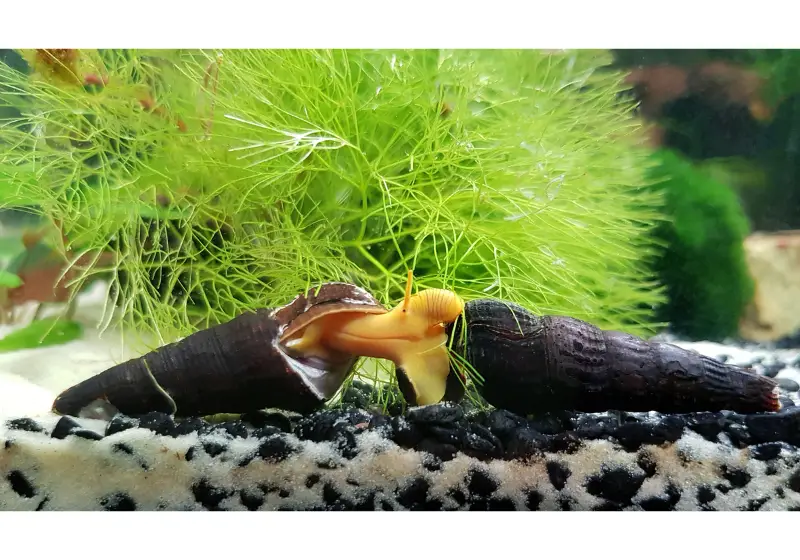
When considering adding rabbit snails to your aquarium, it is important to choose suitable tank mates. Remember that these snails thrive in peaceful environments, so avoiding aggressive and predator species that may harm them is crucial.
Avoid cichlids; many types can be aggressive and might not coexist peacefully with your rabbit snails. Similarly, crayfish make poor tank mates as they are known to attack and eat snails. Goldfish also are not an ideal choice since they produce a significant amount of waste which could lead to poor water quality and stress the snails.
On the other hand, guppies make excellent tank mates for rabbit snails. They are generally peaceful and display beautiful colors that complement the snails in your tank. Otocinclus catfish is another suitable companion, as they graze on algae and contribute to maintaining water cleanliness.
In terms of invertebrates, amano shrimp are known to be compatible with rabbit snails. Both species maintain a clean and healthy tank by consuming algae and debris. Additionally, the peaceful nature of the amano shrimp makes them a great tank mate.
Ramshorn snails can coexist with rabbit snails, as they have similar care requirements and peaceful dispositions. However, be cautious of overcrowding your tank if both species are present, as ramshorn snails are known to reproduce quite rapidly.
In summary, when selecting tank mates for rabbit snails, carefully consider their compatibility with your snails. While guppies, otocinclus catfish, amano shrimp, and ramshorn snails can be suitable companions, avoiding aggressive species such as cichlids, crayfish, and goldfish is best.
Care and Maintenance

Health
To ensure the well-being of your Rabbit Snails, it’s crucial to maintain a stable environment with the appropriate water conditions. Keep the water temperature between 68 to 84°F, with an ideal range of 76 to 82°F. Ensure the pH is between 7.5 and 8.5, as slightly alkaline water is best for their shells.
Watch for possible issues like shell erosion or sluggish activity, which may indicate health concerns. Feeding your Rabbit Snails a high-calcium diet can help prevent shell-related issues.
Remember to stay confident, knowledgeable, neutral, and clear in your approach to maintaining a healthy environment for your Rabbit Snails.
Tank Cleaning
Rabbit Snails are excellent tank cleaners, as they feed primarily on algae and decaying plant materials. To support this natural behavior, provide them with a suitable tank environment.
- Ensure a minimum tank size of 30 gallons.
- Use a smooth and fine substrate like sand.
- Include live plants and snail hiding spots, promoting a natural habitat.
Regularly check the water parameters and perform water changes as required. This helps maintain optimal water quality for your Rabbit Snails, keeping them healthy and active.
Care for your Rabbit Snails by monitoring their health and behavior when maintaining the tank. With a stable environment and regular upkeep, your Rabbit Snails will thrive in your care.
Keeping and Breeding Rabbit Snails: Watch this
Breeding and Lifecycle
Rabbit snails are fascinating creatures when it comes to their breeding and lifecycle. As a viviparous species, they give birth to live baby snails rather than laying eggs. This unique reproduction process makes them an interesting addition to your aquarium.
When rabbit snails reach a specific size, approximately 1.5 inches in height, they are ready to breed. Young snails may take about a year, so it’s crucial to be patient and provide proper care to facilitate their growth. A nutritious diet can help catalyze their growth, preparing them for breeding sooner.
A female rabbit snail reproduces every 4-6 weeks, during which the male passes a sperm packet to the female for fertilization. To ensure successful breeding, it’s essential to maintain optimal water parameters and a stable environment in your aquarium. Here are a few essential factors for their well-being:
- Water temperature: 76 to 84°F (24-29°C)
- pH level: 7.5 to 8.5
- Water hardness: 3 to 10 dGH
Baby rabbit snails are independent from the moment they are born and do not require special care initially. However, it is essential to provide a calcium-rich diet to support shell growth and overall development. You can supply calcium via cuttlebone, crushed eggshells, or supplements.
Regarding diet, rabbit snails are herbivorous, feeding primarily on algae and vegetables. They also help clean your aquarium by consuming decaying food remnants and deceased tank mates. For a balanced diet, provide them with fresh vegetables like spinach, lettuce, and zucchini.
Rabbit snails have an average lifespan of 1.5 to 3 years, depending on factors like water quality, diet, and tank conditions. Proper care and a well-maintained aquarium environment will significantly improve your rabbit snail’s chances of living a healthy, long life.
Frequently Asked Questions
What do Rabbit snails eat?
Rabbit snails are mainly herbivores and enjoy a soft plant matter, algae, and detritus diet. To supplement their diet, you can also provide them with algae wafers or blanched vegetables like spinach and zucchini.
What are the Types of Rabbit snails?
There are several types of rabbit snails, with the most popular being the Yellow Rabbit Snail, Black Rabbit Snail, and Golden Rabbit Snail. Each variety has its own unique shell color and pattern, making them an interesting addition to your aquarium.
What is the Rabbit Snail’s lifespan?
Rabbit snails typically live for 1 to 2 years, but some have been known to live up to 3 years in well-maintained aquariums with optimal water conditions and diet.
Do Rabbit Snails eat algae?
Yes, Rabbit Snails eat algae in their natural habitat and can help control algae growth in your aquarium. However, they should not be solely relied upon for algae control, as they prefer softer algae and may not consume all types present in your tank.
What should be the Rabbit Snail tank size?
For a single Rabbit Snail or a pair, a tank size of 10 gallons is recommended. However, it is crucial to maintain the tank properly, as snails produce a significant amount of waste, adding to the tank’s bioload. Larger tanks are better suited for housing multiple rabbit snails.
What should be the Rabbit Snail temperature?
Rabbit Snails thrive in temperatures ranging from 76 to 82 degrees Fahrenheit. It is essential to consistently maintain the temperature within this range to ensure the well-being of the snail and keep it comfortable in your aquarium.

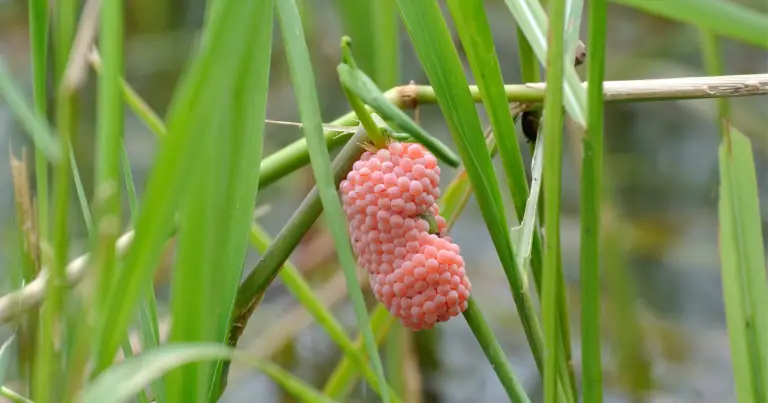

![Do Assassin Snails Eat Each Other? [Full Guide]](https://allourcreatures.com/wp-content/uploads/2021/11/assassin-snail-768x465.jpg)
